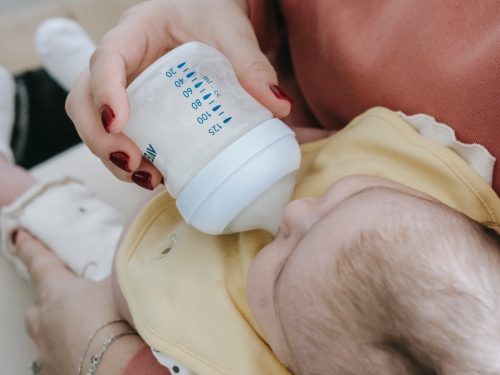Blame for this year’s baby formula shortage has been flying in all directions. The first culprit many point to is the supply chain, which has been under enormous strain due to the COVID-19 pandemic that shut down ports and disrupted the transportation of goods around the world. In fact, by November 2021, 11% of brands of baby formula were out of stock.
The second culprit to receive blame is usually Abbott Labs, the largest of the four major formula manufacturers in the industry, which together control 40% of the U.S. market. Abbott was forced to shut down production at its Sturgis, Michigan plant in February of this year, following a Food and Drug Administration (FDA) recall of several brands of formula due to possible bacterial contamination that may have caused at least two infant deaths. The Sturgis facility is Abbott’s largest, and Abbott produces roughly 40% of the formula sold in the United States, mostly under the Similac brand.
Another factor worthy of blame in the whole situation is import restrictions. Infant formula is subjected to high tariffs as well as tariff-rate quotas (TRQs). In addition, a provision of the 2020 United States–Mexico–Canada Agreement imposed new restrictions on imports of formula from Canada, leading to the U.S. importing no baby formula at all from Canada in 2021. The FDA also prohibits the commercial import and sale of formula from Europe in the U.S., even though many European formulas meet or exceed FDA nutritional guidelines, simply because their nutritional labeling does not conform to U.S. requirements.
One issue that has not received the attention it deserves in the matter has to do with WIC, or the Special Supplemental Nutrition Program for Women, Infants, and Children. According to its website, WIC “provides federal grants to states for supplemental foods, health care referrals, and nutrition education for low-income pregnant, breastfeeding, and non-breastfeeding postpartum women, and to infants and children up to age 5 who are found to be at nutritional risk.”
This is an important and, for many, essential service provided by the government. However, the way the government went about acquiring baby formula for the program beginning in 1989 has undoubtedly contributed to the current shortage.
In the 1980s, the cost of formula was increasing faster than the rate of inflation, which meant WIC programs were eating up increasingly larger portions of states’ federal grant money. Therefore, a couple states decided to ask for rebates from the manufacturers. In exchange for a rebate, a state would offer a manufacturer a sole source contract for the state – the manufacturer providing the rebate would get the entire state's WIC market.
A federal law passed in 1989 essentially mandated that state agencies use a competitive bidding process for buying infant formula. Once a company won the exclusive WIC contract for a state, it was pretty much guaranteed near total market dominance in that state thanks to a sort of spillover effect.
Grocery stores would dedicate the most shelf space to whichever manufacturer had the WIC contract for the state, and non-WIC shoppers would end up buying that brand, too, because that was pretty much all they saw at the store.
Essentially, this meant that winning a WIC contract in a state was essentially a winner-takes-all situation. If you’re a manufacturer and you don’t have the WIC contract to sell baby formula in a state, the best you can hope for is usually a 15% market share in that state.
Over time the system has gotten more concentrated, to the point that 24 states run their bidding process together and all go with the same manufacturer, which just so happens to be Abbott.
Paul Throne, the state WIC director in Washington (which is part of the 24-state consortium), says that the state's collective buying power got them a very good discount on Abbott's formula – a 108% discount, in fact. Abbott actually pays the state to be the WIC provider, because it can then make so much money from non-WIC customers.
This was all well-and-good for a while – money made by Washington from the 108% discount goes directly back into the program to pay for food, after all. But then Abbott voluntarily recalled formula made at its Sturgis facility in February and then shut down the facility altogether, leaving the states with which it has WIC contracts in the lurch. And the recall has been a particular hardship for WIC families, because they can only use their benefits on Abbott formulas. If they buy a different brand, they have to pay out of pocket, which for many is not possible.
While various measures have been taken to alleviate the problem – several military flights from Europe have arrived with hypoallergenic formula specifically for babies with allergies, and the Biden administration has invoked the Defense Production Act to increase the manufacture of baby formula – the shortage continues. That is to be expected when so few manufacturers control such a large portion of the market, and when the market in any one state is essentially winner-takes-all.
In the end, the only way to prevent future shortages due to bacterial outbreaks or other unforeseen disasters – and the dangers they present to our most vulnerable – is to end the practice of government-granted monopolies and allow the free market greater freedom.
























